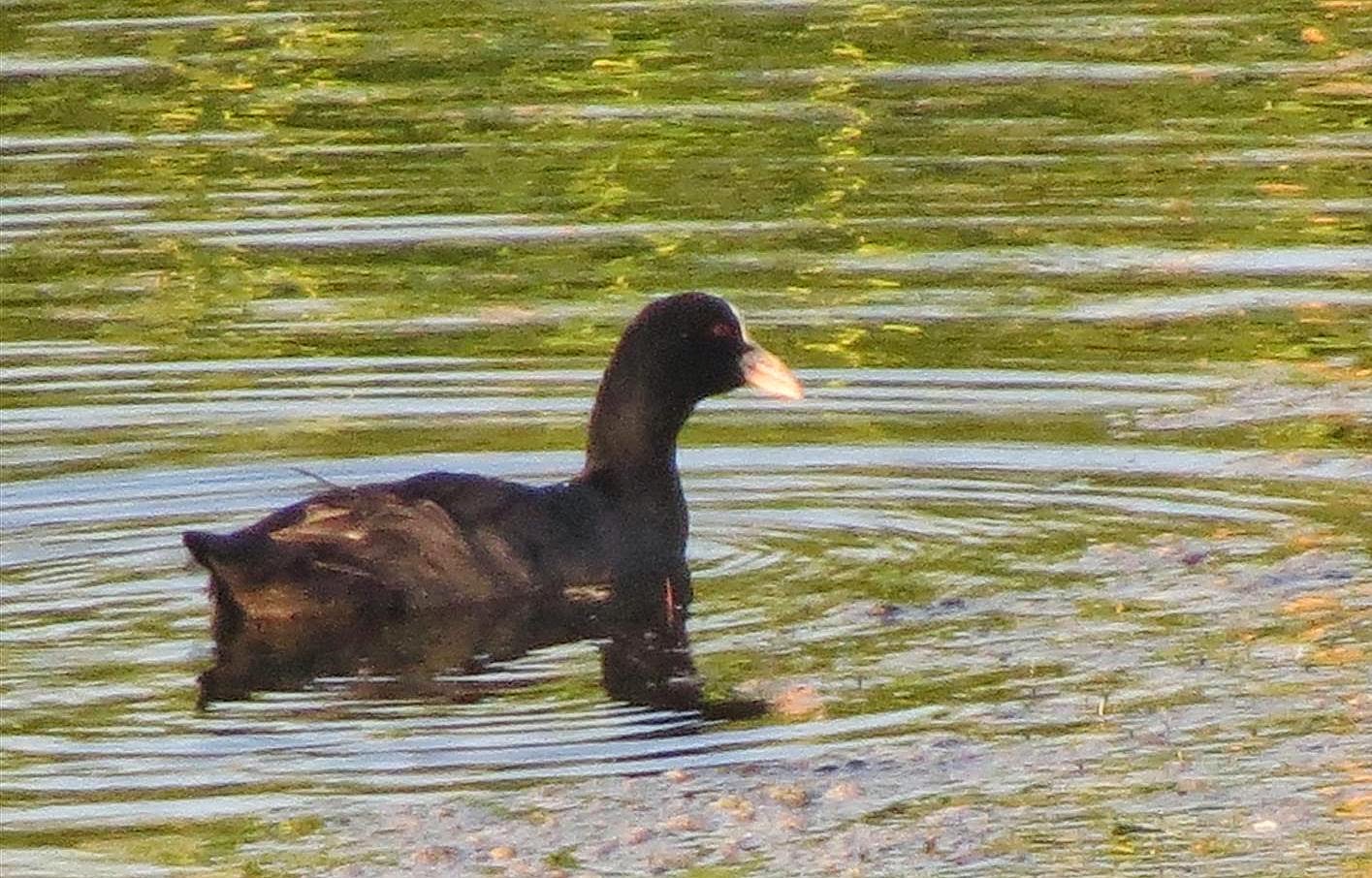As is becoming usual the best birding was at the second and smaller inland pool.
It is a favourite especially with ducks though the wintering vagrant lesser whistling duck couldn't be seen.
The ducks went frantic when a Bonelli's eagle flew over but it was more interested in chasing the one adult flamingo at pool. After a prolonged chase, the flamingo escaped.
Bonelli's eagle
The eagle then settled on a ledge above us waiting for the ducks and moorhen to slowly reappear from hiding.
wigeon and pintail
ferrugineous duck
garganey
As we walked round, Andrew spotted a Baillon's crake which remained visible for about two minutes.
Baillon's crake
This is my third Baillon's crake in Oman and in three different places. It appears to be much commoner than little crake at this time of year at least in Dhofar.
second view of Baillon's crake
Baillon's crake more in the open
While most of our attention was on this back pool, the main inland lake was actually the place that I added a bird to my Oman list. A European reed warbler was seen flitting around the front of the reeds. Two cotton teal were also among the ducks, moorhen and coot there.
common coot
Even though it is only January, there are signs that some birds (but no waders seen yet) are starting to attain spring plumage.
citrine wagtail
The citrine wagtail above was a good example.
After leaving Mughsail, we headed back westward towards Salalah. Before noon we managed to bird it to Raysut settling pools, Raysut treated water lake and Raysut lagoons.
At the settling pools, the vagrant black tern was still on view as was the vagrant spur-winged lapwing. This time it was associating with no fewer than ten red-wattled lapwing.
The best bird for me though was a jack snipe which was an addition to my Oman list.
Abdim's stork
Andrew was hoping to see an Abdim's stork on his visit. He got 200 or 300 times that.
After the settling pools we made a brief stop at the treated water lake. In stark contrast to the smells at the settling pools, this lake is crystal clear. More ducks and flamingo. The black-necked grebe was still there associating with the resident little grebe.
red-throated pipit
A red-throated pipit was starting to show its red throat in readiness for spring.
common redshank
Our final stop at the morning was at Raysut (Salalah) lagoons. Sadly these lagoons are being rapidly trashed by people dumping construction waste, presumably illegally. Nevertheless the eastern side of the wadi is not yet overwhelmed.
The lagoons are there and so still was the demoiselle crane.
demoiselle crane
It main company was a flock of flamingo and a single white stork. Also, several steppe eagle were settled on some of the cliffs.
demoiselle crane with flamingo















No comments:
Post a Comment